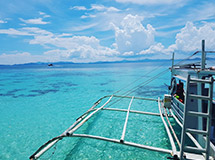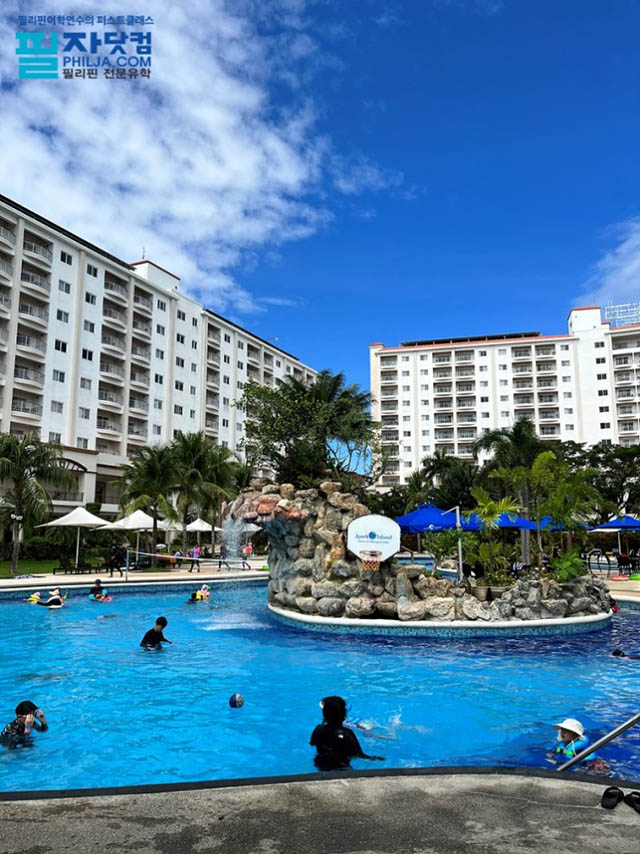
-
МјРЇСІИёСЖШИМі
-
 Malacañang Palace-Official Residence of the Pres
Malacañang Palace-Official Residence of the Pres 138,933
138,933 -
 Amana Water Park
Amana Water Park 115,446
115,446 -
 IFUGAO TRIBE
IFUGAO TRIBE 109,425
109,425 -
 Santacruzan-The Queen of all Filipino Festivals109,325
Santacruzan-The Queen of all Filipino Festivals109,325 -
 Water Refilling Station: an alternative source of drink107,373
Water Refilling Station: an alternative source of drink107,373 -
 LAMBANOG-THE POOR MAN\'S DRINK104,565
LAMBANOG-THE POOR MAN\'S DRINK104,565 -
 Christmas Parol [lantern in English]104,398
Christmas Parol [lantern in English]104,398 -
 HANGING RICE97,110
HANGING RICE97,110 -
 Taoist Temple94,029
Taoist Temple94,029 -
 Corn Fields in the Philippines90,508
Corn Fields in the Philippines90,508
Turtle in Tubbataha Reef
Tubbataha Reef is an atoll coral reef in the Sulu
Sea that belongs to the Philippines. It is a marine sanctuary protected
as Tubbataha Reef National Marine Park. The reef is composed of two
atolls, North and South Reefs. Each reef has a single small islet that
protrudes from the water. The atolls are separated by a deep channel 8
kilometers wide. Over one thousand species, including many that are
endangered, can be found at on the reef. These include manta rays,
lionfish, tortoises, clownfish and sharks.


''The Tubbataha Reef''
(Filipino: Bahurang Tubbataha) is an atollcoral reef and a Natural Marine Park in Sulu Sea, Philippines
composing of two huge atoll (the North Atoll and South Atoll) and the smaller Jessie Beazley Reef.
The park is a Marine Protected Area (MPA) located 150 kilometres (93 mi) southeast of Puerto Princesa City,
Palawan according to the reefs' official website[2] but according to United Nations Educational, Scientific,
and Cultural Organization (UNESCO),[3] the reefs are 181 kilometres (112 mi) southeast of Puerto Princesa City
. The reefs are considered part of the island municipality of Cagayancillo, Palawan, which is located roughly
130 kilometres (81 mi) to the northeast of the reef.[2] According to the official website of the Natural Marine Park,
[2] Tubbataha covers 97,030 hectares (239,800 acres; 374.6 sq mi) while UNESCO measures the reefs
at 130,028 hectares (321,310 acres; 502.04 sq mi).

A Diver with Green Sea turtle
The word tubbataha is a combination of two Samal words: tubba and taha, which together means
"a long reef exposed at low tide". Historically, Samal people who have a nomadic lifestlye,
visit the reef from time to time. Although people from the islands of Cagayancillo are frequent visitors of the reef.
They used the native vessel pangko to sail and fish on "Gusong", their local name for the Tubbataha.[8]


Tubbataha is located in the Sulu Sea, 98 nautical miles (181 km) southeast of Puerto Princesa City in the Palawan
Province according to its official website[2] but it is 150 km southeast of Puerto Princesa City according to
UNESCO.[4] The reef is made up of two coral atolls divided by an eight-kilometer (5 miles) wide
channel and the smaller Jessie Beazley Reef located about 20 kilometres north of the atolls.
The South Atoll is five kilometers in length and three kilometers in width; while the North Atoll,
the larger of the two is 16 kilometers (9.9 mi) long and five kilometers (3 miles) wide. Each reef has a single
small islet that protrudes from the water. The atolls are separated by a deep channel 8 km (5.0 mi) wide.

The Tubbataha Reef is considered as one of the most untouched coral reef formation that remains in the world
today. It is composed of two huge coral atolls, or ring-like coral islands that enclose a lagoon –
the north and south atoll. There is a smaller reef, only half a kilometer in diameter called Jessie Beazley Reef
located 20 kilometers north of the atolls.
The 97,030-hectare park is also a global priority for conservation. It is home to about 600 species
of fish (13 of which is in danger of extinction), 360 species of corals (comprising about half of all coral species
in the world), 11 species of shark (7 are endangered), 13 species of dolphin and whales and 100 species of birds.
It is also home to the critically endangered Hawsbkill and Green sea turtles and the last surviving colonies of
breeding seabirds in Southeast Asia.
As a world heritage site, the Tubbataha Reef has an outstanding universal value.
This means that it does not belong to the Philippines alone. It is considered as a world treasure.
Hopefully, a solution to the shipЁЏs extraction must be made soon for no amount of monetary compensation
can make up for the thousand yearsЁЏ formation of the Tubbataha Reef.



The Tubbataha Reef National Marine Park has been expanded from 33,200 hectares to 96,828 hectares through
Presidential Proclamation 1126 signed on August 23, 2006. This puts a larger chunk of our ocean under protection.
Although it increases the challenge for management, we all feel up to it because we believe conserving the marine
environment is worth the sacrifice.

Green Buckner

There are no settlements on the islets or reefs. Fishermen visit the area seasonally, establishing shelters on
the islets. The park is visited by tourists, particularly divers. Trips to Tubbattaha from mid-March to mid-June are
all vessel-based; the park is about ten hours by boat from Puerto Princesa City.[23] Tubbataha is considered as
one of the best dive sites in the world according to CNN Travel[24] and during the "Tubbataha Season",
ships dedicated for diving are usually booked years in advance[10] especially during the Asian holidays of Easter
and "Golden Week".
The Tubbataha National Marine Park is open to liveaboard diving excursions between the months of April to June.
It is in this period where the waves are most calm. As of March 2011, the park entrance fee for individuals is pegged at USD $75.00 or PHP 3,000.00.[25] In September 2010, Palawan governor Abraham Kahlil Mitra announced that local
residents of Palawan province can enter the Tubbataha Reef without paying the conservation fee.[26] It is advised
that divers book their trips towards the middle or end of April as calm seas from April to June has a short window.[27] Strong waves may cause problems for dive excursions and underwater visibility.
Although the sand bars around Tubbataha are considered off limits to human beings, tourists are allowed to set foot at the Ranger Station where they can purchase souvenirs and tour the facility.

- ЁЄSalapan Festival
- ЁЄEmpanada Festival (Batac City)
- ЁЄPADUL-ONG FESTIVAL
- ЁЄKaumahan Festival in Barili
- ЁЄKAGASANGAN FESTIVAL
- ЁЄLalin Festival in Asturias
- ЁЄTinabuay Festival
- ЁЄGayon Bicol Festival
- ЁЄPINYASAN FESTIVAL in CAMARINES
- ЁЄMAGAYON FESTIVAL
- ЁЄBANAUAN FESTIVAL (BARANGAY.GUA
- ЁЄThe Tuna Festival in Gensan
- ЁЄPINTOS FESTIVAL BOGO CITY, CEB
- ЁЄPanaad sa Negros
- ЁЄPasalamat Festival



- ЁЄCEBU WESTOWN LAGOON
- ЁЄGREEN LAGOON, COMPOSTELA
- ЁЄCALLAO CAVE
- ЁЄMOUNT PINATUBO IN PHILIPPINES
- ЁЄBATAN ISLAND in Batanes.
- ЁЄCALAGUAS ISLAND, CAMARINES NOR
- ЁЄAGHO ISLAND
- ЁЄCARAMOAN ISLAND IN CAMARINES S
- ЁЄSAMBAWAN ISLAND
- ЁЄPLACES TO VISIT IN LANAO DEL N
- ЁЄPLACES TO VISIT IN ZAMBOANGA C
- ЁЄPlaces to visit in Rizal Provi
- ЁЄHISTORIC TOWN OF VIGAN CITY, I
- ЁЄCAMBUGAHAY FALLS, SIQUIJOR ISL
- ЁЄTINUY-AN FALLS in BISLIG CITY,













 ЧЪРкДхФФ ОпАЃЛѓДу ПРЧТ
ЧЪРкДхФФ ОпАЃЛѓДу ПРЧТ 11ГтПЌМг МвКёРкИИСЗ 1РЇ
11ГтПЌМг МвКёРкИИСЗ 1РЇ
 ГЛАд ИТДТ ОюЧаПј УЃБт
ГЛАд ИТДТ ОюЧаПј УЃБт
 ИЎОѓ ЧаБГ ЙцЙЎБт
ИЎОѓ ЧаБГ ЙцЙЎБт
 СжИЛПЁ ГЛАЁ ОЕ КёПыРК?
СжИЛПЁ ГЛАЁ ОЕ КёПыРК? УжАэАЁМККё РЬКЅЦЎ СёБтБт
УжАэАЁМККё РЬКЅЦЎ СёБтБт
 ЧіСіПЁМЕЕ ЧЪРкДхФФ!
ЧіСіПЁМЕЕ ЧЪРкДхФФ! ЧіСіПЁМ АЁДЩЧб
ЧіСіПЁМ АЁДЩЧб









 ЧЪРк ЦЏБо Ч§ХУ! ФСНУОюСі МКёНК
ЧЪРк ЦЏБо Ч§ХУ! ФСНУОюСі МКёНК



 АЁСЗПЌМіЗЮ ДйЧдАд ОзЦМКёЦМ
АЁСЗПЌМіЗЮ ДйЧдАд ОзЦМКёЦМ





























